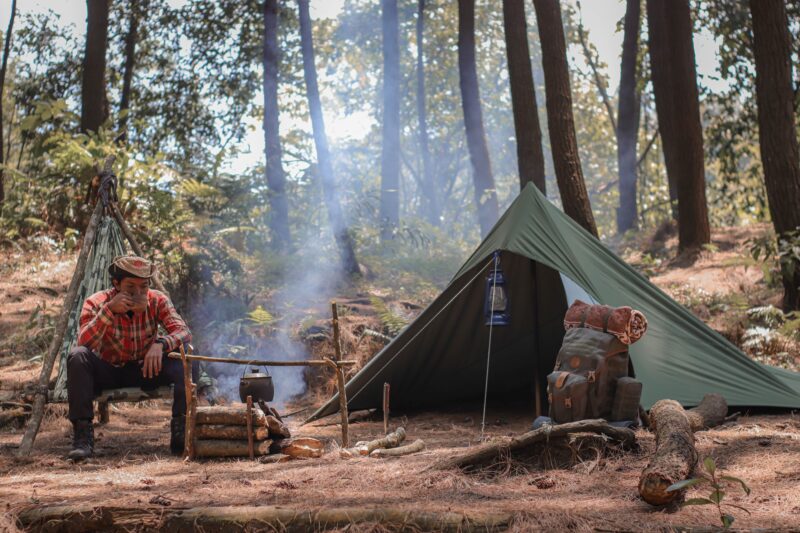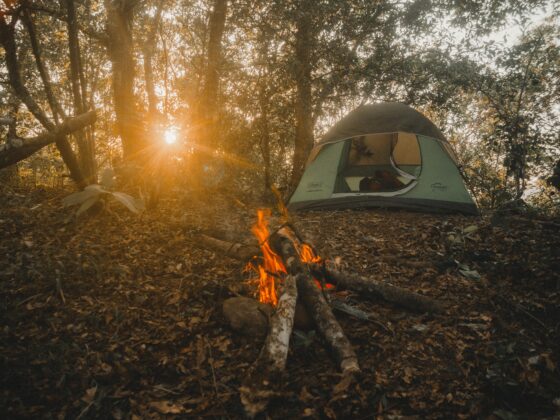There’s nothing quite like the experience of camping out in the great outdoors. The fresh air, the sounds of nature, and the sense of adventure can all be exhilarating. However, setting up and organizing a campsite can be daunting, especially for those new to camping. With so many details, it can be easy to feel overwhelmed. In this article, we’ll share some valuable tips for setting up and organizing a campsite.
From choosing the right location to packing essential gear, we’ve got you covered. Read on to learn how to make your next camping trip successful!
Choosing the right campsite
When choosing a campsite, there are several factors to consider.
First and foremost, you’ll want to make sure that the site is legal and safe for camping. Check with the park or forest service where you plan to camp to ensure you follow all the rules and regulations. Once you’ve confirmed that the site is legal, you’ll want to look for a spot that is level, dry, and free of hazards. Avoid setting up camp under dead trees or areas prone to flash flooding.
Another thing to consider when choosing a campsite is the proximity to water and restroom facilities. Being close to a water source will do cooking and cleaning much easier while being near a restroom will save you from having to trek to the nearest bathroom in the middle of the night. However, keep in mind that campsites near water and toilets tend to be more crowded and noisy.
Finally, consider the view when selecting a campsite. If you’re camping in a national park or other scenic areas, you’ll want to choose a site that offers a great view of the surrounding landscape. A good view can highlight your camping experience, so take the time to find a spot that provides a great vantage point.
Essential camping gear
When it comes to camping gear, it’s important to pack strategically. You’ll want to bring everything you need without overloading your pack. Here are some essential items to include on your camping checklist:
Camping tent: A sturdy, waterproof camping tent is essential for any camping trip. Make sure to choose a tent appropriate for the number of people in your group and the weather conditions you’ll face.
Sleeping bag: A high-quality sleeping bag will keep you warm and comfortable throughout the night. Choose a bag that is appropriate for the expected temperature range.
Sleeping pad: A sleeping pad provides a layer of insulation between you and the ground, making for a more comfortable night’s sleep.
Camp stove: A portable camp stove allows you to cook meals and boil water for drinking. Camping supplies stores carry various lamps and stoves collections that you can choose from.
Cooler: A camping cooler is essential for keeping food and drinks cold.
Headlamp or flashlight: A reliable light source is necessary for navigating the campsite after dark.
First aid kit: A basic first aid kit should include bandages, antiseptic, pain relievers, and other essential medical supplies.
Setting up camp
Once you’ve chosen a campsite and packed your gear, it’s time to set up camp.
The first step is to clear the area of any debris or hazards. Next, remove any rocks, sticks, or objects that could damage your tent or pose a tripping hazard.
Next, set up your tent. Follow the manufacturer’s instructions carefully, and use guylines and stakes to secure the tent in place. If it’s windy, position the tent so that the door is facing away from the wind.
After setting up your tent, it’s time to set up your camp kitchen. Use a camp stove for cooking meals and boiling water for drinking. Keep food and drinks in a cooler to prevent spoilage.
Finally, set up your sleeping area. Inflate your sleeping pad and lay out your sleeping bag. Keep your sleeping area clean and free of food and drink spills. To keep your tent dry, buy a water-repellant tent spray from your trusted camping shop.
Organizing your campsite
Organizing your campsite can help you make the most of your outdoor experience. Here are some tips for keeping your campsite neat and tidy:
- Keep food and trash in bear-resistant containers or hung from a tree to prevent wildlife from getting into them.
- Designate specific areas for different activities, such as cooking, eating, and sleeping.
- Use a clothesline to dry wet clothes and towels.
- Keep a broom or small dustpan and brush on hand to sweep up dirt and debris.
- Use storage containers to keep gear organized and easy to find.
- Keep a camp journal to record your experiences and observations.
Campfire safety
A campfire can be a great way to stay warm and enjoy the outdoors, so follow some basic safety guidelines to prevent accidents. Here are some tips for building and maintaining a safe campfire:
- Choose a safe location for your fire, away from trees, bushes, and other flammable materials.
- Clear the area around the fire pit of any debris or vegetation.
- Use only designated fire rings or pits if available.
- Keep a bucket of water and a shovel nearby in an emergency.
- Never leave a campfire unattended.
- Make sure the fire is completely extinguished before leaving the campsite.
Leave No Trace principles
As outdoor enthusiasts, it’s important to practice Leave No Trace principles to minimize our impact on the natural environment. Here are the seven principles of Leave No Trace:
- Plan ahead and prepare.
- Travel and camp on durable surfaces.
- Dispose of waste properly.
- Leave what you find.
- Minimize campfire impact.
- Respect wildlife.
- Be considerate of other visitors.
Follow these principles to help preserve the beauty and integrity of our natural spaces for future generations.
Camping etiquette
When camping, be respectful of other campers and the environment. Here are some tips for practicing good camping etiquette:
- Keep noise levels down, especially after dark.
- Respect other campers’ space and privacy.
- Keep pets on a leash and clean up after them.
- Follow all park and forest service rules and regulations.
- Don’t disturb wildlife or their habitats.
- Leave the campsite in better condition than you found it.
Campsite entertainment ideas
While camping is often about unplugging and enjoying the great outdoors, there are still plenty of ways to have fun at the campsite. Here are some ideas for campsite entertainment:
- Play board games or card games.
- Bring along a guitar or other musical instrument and have a sing-along.
- Go on a nature hike or scavenger hunt.
- Tell ghost stories around the campfire.
- Bring a book or two to read in the evenings.
- Stargaze and try to identify constellations.
Conclusion
Camping is a fantastic way to experience nature and enjoy time with family and friends. Follow the tips for setting up and organizing your campsite to make the most of your outdoor adventure.



